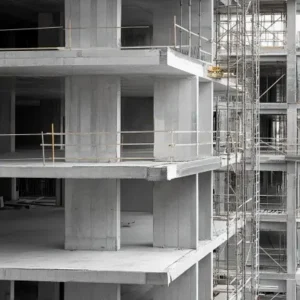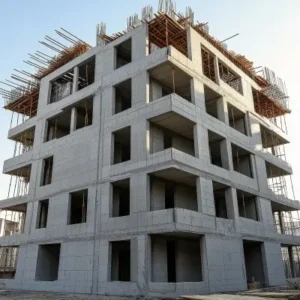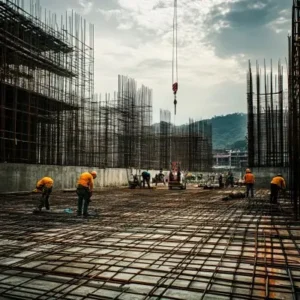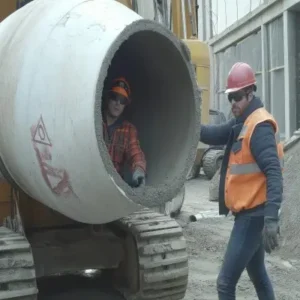Foundation cracks. Uneven settling. These nightmares haunt every builder and homeowner. But here’s a secret: fiber-reinforced concrete can solve these problems. With the right thickness, it ensures durability, strength, and crack resistance. But how thick is thick enough? Let’s dive in!
The thickness of fiber-reinforced concrete for a foundation depends on factors like soil type, building load, and fiber type. Generally, residential foundations require a minimum thickness of 4-6 inches, while heavier structures may need up to 12 inches. Fibers enhance the tensile strength, reducing the need for extreme thickness.
Wondering how fibers impact the thickness? Or how to calculate the perfect depth? Stick with me, and let’s explore the nitty-gritty of fiber-reinforced concrete foundations.
Why Does Thickness Matter for a Foundation?
1. What happens if the foundation is too thin?
A thin foundation can’t bear the load, leading to cracks and potential collapse. Fiber reinforcement reduces cracking but can’t compensate for inadequate thickness.
2. Can too much thickness cause problems?
Yes! Overly thick foundations increase costs without significant benefits and may delay curing time unnecessarily. Balance is key.
3. How do fibers change the equation?
Fibers distribute stress, allowing for thinner, more effective slabs without compromising strength. They’re especially helpful in areas with poor soil conditions.

How to Determine the Right Thickness?
Understand the Load
The thickness depends on the weight the foundation needs to support. A small residential home might only need 4-6 inches, while industrial buildings require more.
Soil Type
Clay and loose soils need thicker slabs to prevent uneven settling. Fiber-reinforced concrete helps, but soil conditions are still crucial.

Fiber Type
The type of fiber—polypropylene, steel, or glass—affects the thickness. Steel fibers, for instance, allow for thinner slabs while maintaining strength.
Common Scenarios and Their Requirements
Residential Foundations
For single-family homes, a 4-6 inch slab works well. Adding polypropylene fibers minimizes shrinkage cracks and ensures durability.
Commercial Floors
Warehouses and commercial spaces may need 8-10 inches due to heavier loads. Steel fibers are ideal for these applications.

Industrial Projects
For high-load applications like factories, 10-12 inches with a combination of steel and glass fibers ensures maximum performance.
Frequently Asked Questions About Fiber-Reinforced Concrete Thickness
1. How do I calculate the thickness for my project?
Consider load, soil type, and fiber type. Tools like structural engineering software can help.
2. Can fibers replace traditional reinforcement entirely?
In some cases, yes. Fibers enhance tensile strength, allowing for reduced or eliminated steel reinforcement.
3. Does fiber-reinforced beton cure differently?
It cures similarly, but fibers improve resistance to shrinkage cracks during curing.
4. Are thicker slabs always better?
No. While thicker slabs add strength, they also increase costs and curing time unnecessarily. Balance is key.
5. How do fibers affect cost?
Though fibers may add to upfront costs, they reduce long-term maintenance and repairs, making them cost-effective.

How Fiberego Can Help
At Fiberego, we specialize in fibers that transform concrete. Whether you need polypropylene for residential foundations or steel fibers for heavy-duty projects, we’ve got you covered.
Our fibers:
- Improve durability and crack resistance.
- Optimize slab thickness, saving you money.
- Support sustainable construction practices.
Have questions? Our experts are here to guide you.
Conclusion
The thickness of fiber-reinforced concrete foundations isn’t one-size-fits-all. It depends on load, soil, and fiber type. From residential slabs to industrial floors, fibers like ours at Fiberego enhance performance, reduce costs, and ensure lasting strength. Ready to strengthen your next project? Let’s build something extraordinary together.



